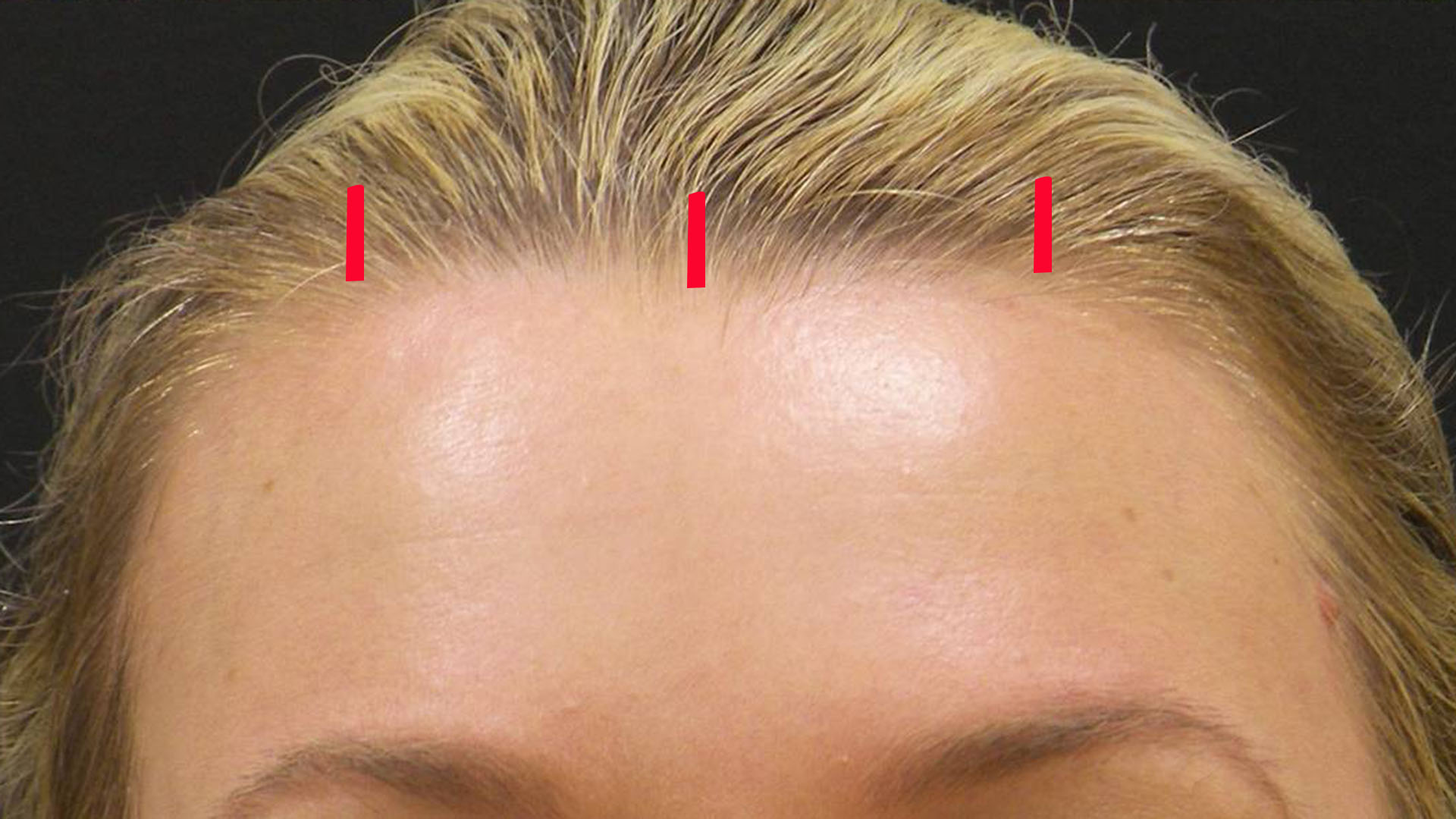Brow lift surgery, as mentioned in our last post, can be achieved by several different methods. We’ve already mentioned coronal and pre-trichial techniques. In this post, we’ll talk about endoscopic brow lift surgery, direct brow lift surgery, and the internal browpexy.

Endoscopic brow lift incisions
Endoscopic brow lift surgery
Endoscopic brow lift surgery is performed by making 2-3 small incisions just behind the hairline. Through these incisions, the forehead and brow skin and muscles are lifted off the bone, pulled up, and then held in place with either stitches or a fixation device. Like the other brow lift surgeries mentioned before, the head is wrapped for a few days afterward. Recovery is usually fast with minimal pain. Incisions are closed with staples, which are removed after about a week. Bruising tends to be minimal, unless paired also with an eyelid procedure. Pros: Less invasive than coronal or pre-trichial brow lift surgery due to the smaller incisions; scars are hidden within the hairline; it raises the forehead and brows giving a nice outcome. Cons: Because no tissue is removed, results can be temporary; may not be any more effective than browpexy, but has harbors more risk. My conclusion: Endoscopic brow lift surgery was once my surgery of choice for droopy brows. It seemed to offer the lowest risk of scarring and resulted in a nice looking brow elevation. After performing dozens of these procedures and then watching patients long term, I found that the results just weren’t as compelling as I wanted. It seemed that most of the improvement came from the eyelid surgery done at the same time. I have almost completely stopped doing this procedure for this reason.
Internal browpexy
The internal browpexy is a way of lifting or supporting the brows using the same incision made to lift the eyelids. After excess eyelid skin is removed, further dissection is made under the eyebrows, which releases the muscles that hold them down, allowing them to rise. The brows are the stitched in a higher position. The eyelid surgery is then finished and the wound is closed. The eyelids are covered in antibiotic ointment. No bandages are needed. Recovery is just like that of eyelid surgery, with some tenderness of the brows. The deep stitches take 6-8 weeks to fully dissolve, which can cause tenderness when the brows are touched. Pros: Least invasive of all the brow lifting techniques; can lift the brows 3-4 millimeters and prevent them from falling further; scars are well hidden. Cons: Because no skin is removed, it is likely to eventually fail as gravity and skin changes continue. My conclusion: I use browpexy on many patients who either don’t want or couldn’t tolerate a larger brow lift surgery. In many cases our goal is to simply keep the brows from falling further, which can happen after eyelid surgery. Browpexy does this well. I always explain that it isn’t a true brow lift and shouldn’t be expected to make a striking difference in their appearance. It is most helpful when the vision is being blocked by both the eyelids and brows and both need some attention.
As you can see, there are many ways to lift the brows. Brow lift surgery is well tolerated and most patient have great outcomes with better peripheral vision. If you have questions, feel free to call us at (801)264-4420.
